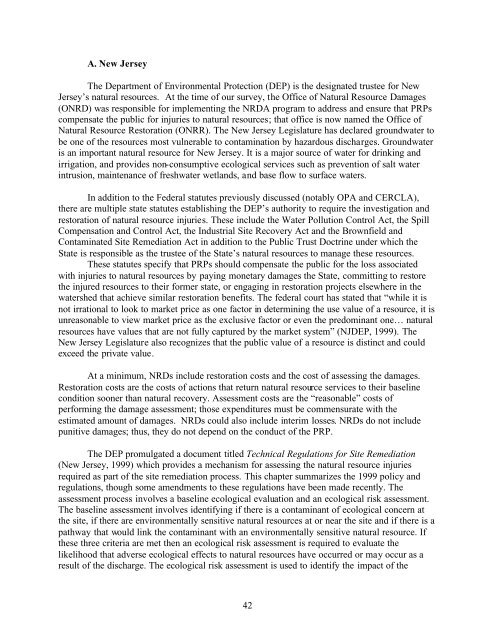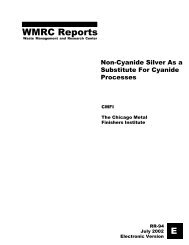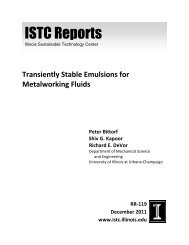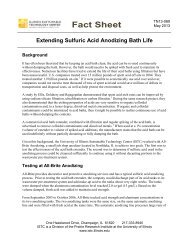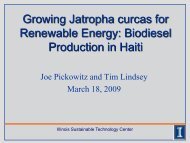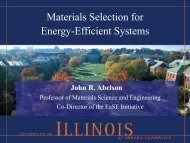Natural Resource Damage Assessment: Methods and Cases
Natural Resource Damage Assessment: Methods and Cases
Natural Resource Damage Assessment: Methods and Cases
You also want an ePaper? Increase the reach of your titles
YUMPU automatically turns print PDFs into web optimized ePapers that Google loves.
A. New Jersey<br />
The Department of Environmental Protection (DEP) is the designated trustee for New<br />
Jersey’s natural resources. At the time of our survey, the Office of <strong>Natural</strong> <strong>Resource</strong> <strong>Damage</strong>s<br />
(ONRD) was responsible for implementing the NRDA program to address <strong>and</strong> ensure that PRPs<br />
compensate the public for injuries to natural resources; that office is now named the Office of<br />
<strong>Natural</strong> <strong>Resource</strong> Restoration (ONRR). The New Jersey Legislature has declared groundwater to<br />
be one of the resources most vulnerable to contamination by hazardous discharges. Groundwater<br />
is an important natural resource for New Jersey. It is a major source of water for drinking <strong>and</strong><br />
irrigation, <strong>and</strong> provides non-consumptive ecological services such as prevention of salt water<br />
intrusion, maintenance of freshwater wetl<strong>and</strong>s, <strong>and</strong> base flow to surface waters.<br />
In addition to the Federal statutes previously discussed (notably OPA <strong>and</strong> CERCLA),<br />
there are multiple state statutes establishing the DEP’s authority to require the investigation <strong>and</strong><br />
restoration of natural resource injuries. These include the Water Pollution Control Act, the Spill<br />
Compensation <strong>and</strong> Control Act, the Industrial Site Recovery Act <strong>and</strong> the Brownfield <strong>and</strong><br />
Contaminated Site Remediation Act in addition to the Public Trust Doctrine under which the<br />
State is responsible as the trustee of the State’s natural resources to manage these resources.<br />
These statutes specify that PRPs should compensate the public for the loss associated<br />
with injuries to natural resources by paying monetary damages the State, committing to restore<br />
the injured resources to their former state, or engaging in restoration projects elsewhere in the<br />
watershed that achieve similar restoration benefits. The federal court has stated that “while it is<br />
not irrational to look to market price as one factor in determining the use value of a resource, it is<br />
unreasonable to view market price as the exclusive factor or even the predominant one… natural<br />
resources have values that are not fully captured by the market system” (NJDEP, 1999). The<br />
New Jersey Legislature also recognizes that the public value of a resource is distinct <strong>and</strong> could<br />
exceed the private value.<br />
At a minimum, NRDs include restoration costs <strong>and</strong> the cost of assessing the damages.<br />
Restoration costs are the costs of actions that return natural resource services to their baseline<br />
condition sooner than natural recovery. <strong>Assessment</strong> costs are the “reasonable” costs of<br />
performing the damage assessment; those expenditures must be commensurate with the<br />
estimated amount of damages. NRDs could also include interim losses. NRDs do not include<br />
punitive damages; thus, they do not depend on the conduct of the PRP.<br />
The DEP promulgated a document titled Technical Regulations for Site Remediation<br />
(New Jersey, 1999) which provides a mechanism for assessing the natural resource injuries<br />
required as part of the site remediation process. This chapter summarizes the 1999 policy <strong>and</strong><br />
regulations, though some amendments to these regulations have been made recently. The<br />
assessment process involves a baseline ecological evaluation <strong>and</strong> an ecological risk assessment.<br />
The baseline assessment involves identifying if there is a contaminant of ecological concern at<br />
the site, if there are environmentally sensitive natural resources at or near the site <strong>and</strong> if there is a<br />
pathway that would link the contaminant with an environmentally sensitive natural resource. If<br />
these three criteria are met then an ecological risk assessment is required to evaluate the<br />
likelihood that adverse ecological effects to natural resources have occurred or may occur as a<br />
result of the discharge. The ecological risk assessment is used to identify the impact of the<br />
42


